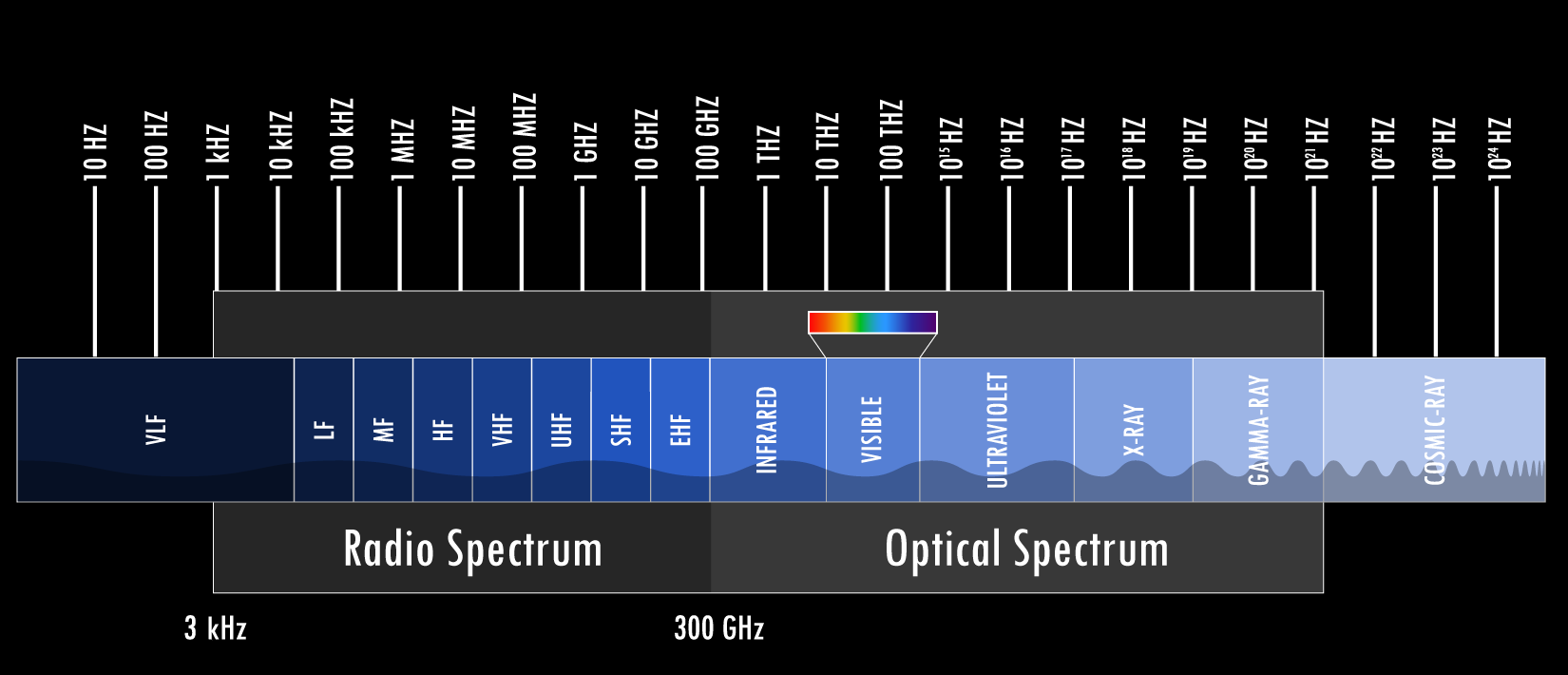There are numerous ways frequency bands have been designated. The International Telecommunications Union designates bands as listed in the table below.
Frequencies as designated by the International Telecommunications Union
3 Hz-30 Hz
Wavelength: 10^8m-10^7m
Band: Extremely low frequency (ELF)
30 Hz-300 Hz
Wavelength: 10^7m-10^6m
Band: Super low frequency (SLF)
300 Hz-3 kHz
Wavelength: 10^6m-10^5m
Band: Ultra low frequency (ULF)
300 Hz-3 kHz
Wavelength: 10^6m-10^5m
Band: Ultra low frequency (ULF)
There are also other approaches to designating frequency bands. During World War II, certain radar bands were given code words so engineers could talk about them without divulging their actual frequency. They were deliberately non-sequential. After the war, the secrecy was lifted. The Institute of Electrical and Electronics Engineers (IEEE) has published a standard for the letter designation of radar-frequency bands. These codes are used by some engineers for radar, satellite, and terrestrial communications.
Institute of Electrical and Electronics Engineers (IEEE) Radar Band Designations
3-30 MHz
Wavelength: 100-10 m
Band: HF
30-300 MHz
Wavelength: 10–1 m
Band: VHF
300-1000 MHz
Wavelength: 100–30 cm
Band: ULF
1-2 GHz
Wavelength: 30–15 cm
Band: L
2-4 GHz
Wavelength: 30–15 cm
Band: S
4-8 GHz
Wavelength: 15–7.5 cm
Band: C
8-12 GHz
Wavelength: 7.5–3.75 cm
Band: X
12-18 GHz
Wavelength: 3.75–2.50 cm
Band: Ku
18-27 GHz
Wavelength: 1.67–1.11 cm
Band: K
27–40 GHz
Wavelength: 11.1–7.5 mm
Band: Ka
40-75 GHz
Wavelength: 7.5 mm-4 mm
Band: V
75-110 GHz
Wavelength: 4 mm-2.73 mm
Band: W
Bandwidth is the portion of the spectrum that a given telecommunications system can use. For example, a system that operates on frequencies between 150 and 200 MHz has a bandwidth of 50 megahertz.
An important distinction in spectrum technology is the difference between narrowband and broadband. Narrowband signals have a smaller bandwidth (kilohertz) and are used for limited services such as paging and low-speed data transmission. Broadband signals have a large bandwidth (megahertz) and can support many advanced telecommunications services such as high-speed data and video transmission. The precise dividing line between broadband and narrowband is not always clear, and changes as technology evolves.



























